Results 10,391 to 10,400 of 12096
Thread: Anandtech News
-
03-03-20, 10:10 AM #10391
Anandtech: Cypress Announces USB 3.2 & USB4-Ready Controllers: EZ-PD CCG6DF & CCG6SF
Cypress has unveiled a pair of upcoming USB Type-C controllers for next-generation desktops and laptops. The new EZ-PD CCG6DF and EZ-PD CCG6SF controllers are single-chip solutions that support USB 3.2, DisplayPort, and Power Delivery with fault protection. In addition, the controllers are ready to work with USB4 devices.
Cypress’s EZ-PD CCG6DF and EZ-PD CCG6SF are highly-integrated dual-port and single-port USB-C controllers. Both controllers are based on a 32-bit Arm Cortex-M0 processor, with 64 KB of eFlash to enable enhanced programmability as well as firmware upgrades to gain new functionality or deploy bug fixes. The controllers connect to their host using a PCIe interface and support a variety of protocols, including USB 3.2, DisplayPort, and PCIe.
Meanwhile, the controllers also offer a limited degree of support for USB4; however just what this entails is somewhat murky. According to the company's press release, the new controllers support "firmware upgrades to support the new USB4 standard", however we've been told sperately by the company that the chips are not USB4 controllers. Further still, the company does use the USB4 logo on the product page. What this may come down to is data rates: USB4 offers both 40Gbps and 20Gbps rates, and while both use the standard's fully encapsulated packet format, the 20Gbps data rate isn't any faster (or using any additional wires) than what today's SuperSpeed USB 20Gbps (Gen2x2) devices can already do. So if Cypress is waiting to enable USB4 support at a future date, it could very well be that they will (eventually) be usable as USB4 20Gbps controllers.
Moving on, one of the other important capabilities of the new chips is an integrated VBUS provider load switch, which allows the chip to support 100 W Power Delivery with fault protection. The integration of switch reduces design footprint and BOM costs, which is helpful for getting wider-spread support for high capacity USB power delivery.
Cypress uses an unknown process technology to build the EZ-PD CCG6DF and EZ-PD CCG6SF controllers and will offer them in 96-pin BGA and 48-pin QFN packages to support various requirements.
Cypress has started sampling of its EZ-PD CCG6DF and EZ-PD CCG6SF controllers with major OEMs. The company expects to start volume production in early Q3, so we may see consumer products by the end of this year.
Related Reading:
- USB-IF: USB4 Products Coming in Late 2020
- USB4 Specification Announced: Adopting Thunderbolt 3 Protocol for 40 Gbps USB
- Cypress and Zhaoxin Have USB 3.1 Gen 2 USB Controllers
- Infineon Set to Acquire Cypress for $10 Billion
Source: Cypress
More...
-
03-03-20, 01:05 PM #10392
Anandtech: Next Generation Arm Server: Ampere’s Altra 80-core N1 SoC for Hyperscalers
Several years ago, at a local event detailing a new Arm microarchitecture core, I recall a conversation I had with a number of executives at the time: the goal was to get Arm into 25% of servers by 2020. A lofty goal, which hasn’t quite been reached, however after the initial run of Arm-based server designs the market is starting to hit its stride with Arm’s N1 core for data-centers getting its first outings. Out of those announcing an N1-based SoC, Ampere is leading the pack with a new 80-core design aimed at cloud providers and hyperscalers. The new Altra family of products is aiming to offer competitive performance, performance per watt, and scalability up to 210 W and tons of IO, for any enterprise positioning.
More...
-
03-04-20, 10:24 AM #10393
Anandtech: UNISOC Unveils T7520 SoC for 5G Smartphones: Octa-Core, 6nm EUV
UNISOC, formerly Spreadtrum Semiconductor, has announced its first mobile application processor with an integrated 5G modem. Dubbed the T7520, the SoC also happens to be one of the world’s first chips to be made using TSMC’s 6 nm process technology, which uses extreme ultraviolet lithography (EUVL) for several layers.
The UNISOC T7520 application processor packs four high-performance Arm Cortex-A76 cores, four energy-efficient Arm Cortex-A55 cores, as well as an Arm Mali-G57 GPU with a display engine that supports multiple screens with a 4K resolution and HDR10+. Furthermore, the SoC integrates a new NPU that is said to offer a 50% higher TOPS-per-Watt rate than the company’s previous-generation NPU. In addition, the chip features a four-core ISP that supports up to 100 MP sensors and multi-camera processing capability. Finally, the AP also features the company’s latest Secure Element processor that supports ‘most of crypto algorithms’ and can handle compute-intensive security scenarios, such as encrypted video calls.
One of the key features of the UNISOC T7520 is of course its integrated 2G/3G/4G/5G-supporting modem, which supports 5G NR TDD+FDD carrier aggregation, as well as uplink and downlink decoupling for enhanced coverage. All told, the T7520's modem is designed to offer peak uplink speed of 3.25 Gbps.
The high level of integration of the T7520 SoC is designed to enable smartphone manufacturers to build more reasonably priced 5G handsets, which will inevitably increase their popularity and adoption of the technology. Meanwhile, usage of TSMC’s 6 nm fabrication technology (known as N6) should allow UNISOC to make the AP for less than compared to non-EUV fabrication processes.
UNISOC did not announce when it plans to start shipments of its T7520 application processor, though it is reasonable to expect it to become available this year.
Related Reading:
- Sizing Up The 5G Modem Market: Qualcomm, Intel, Huawei, Samsung, UniSOC, and Mediatek
- CES 2020: MediaTek Announces New Dimensity 800 Mid-Range 5G SoC
- Qualcomm Announces Snapdragon 865 and 765(G): 5G For All in 2020, All The Details
- Qualcomm’s New 3rd Generation Snapdragon X60 5G Modem, Built on 5nm
Source: UNISOC
More...
-
03-04-20, 10:24 AM #10394
Anandtech: Western Digital Introduces WD Gold Enterprise SSDs
On what would have been the first day of the Open Compute Project's annual Global Summit, Western Digital is bringing out a new line of enterprise SSDs. The WD Gold brand for enterprise drives is getting an SSD counterpart to the existing WD Gold enterprise hard drives. WD's color-based drive branding now features both SSDs and hard drives in almost every product segment: Blue and Green mainstream consumer drives, Black for high-end consumer, Red for NAS systems, and Gold for enterprise. The only one missing an SSD option is the WD Purple family for video surveillance recording (though there is a WD Purple microSD card).
The new WD Gold SSD isn't anything new technologically; it's basically a re-branding of a portion of the Ultrastar DC SN640 product line. Where the WD Gold differs is in the target markets: Like other WD (color) products, the WD Gold SSD is intended for channel and retail sales rather than the large-scale direct B2B sales model used for Western Digital's Ultrastar datacenter drives and their client OEM drives. The WD Gold SSD will make Western Digital's enterprise SSD technology more accessible to small and medium enterprise customers.
The WD Gold SSD is based on the same hardware as the Ultrastar DC SN640 series, but the WD Gold product line doesn't include as many options. The SN640 comes in two endurance tiers: 0.8 drive writes per day and 2 DWPD. The WD Gold SSD line only includes the 0.8 DWPD drives, and only the U.2 form factor versions: a total of four capacity options from 960 GB up to 7.68 TB. These drives use the latest Western Digital/Kioxia 96-layer 3D TLC NAND flash memory and one of Western Digital's own in-house NVMe controller designs.Western Digital WD Gold SSDs Capacity 960 GB 1.92 TB 3.84 TB 7.68 TB Form Factor 2.5" U.2 7mm Interface PCIe 3.0 x4, NVMe 1.3 Controller WD Proprietary NAND 96-layer BICS4 3D TLC NAND Sequential Read 3000 MB/s 3100 MB/s 3100 MB/s 3100 MB/s Sequential Write 1100 MB/s 2000 MB/s 1800 MB/s 1800 MB/s Random Read (4 kB) IOPS 413k 472k 469k 467k Random Write (4 kB) IOPS 44k 63k 63k 65k 70/30 R/W Mixed IOPS 111k 194k 174k 187k Power Active Configurable 10, 11, 12 W limit Idle 4.6 W 4.62 W 4.94 W 4.95 W Encryption AES-256 Power Loss Protection Yes Write Endurance 1.4 PB
0.8 DWPD2.8 PB
0.8 DWPD5.61 PB
0.8 DWPD11.21 PB
0.8 DWPDWarranty Five years
The technical specs for the WD Gold SSDs are identical to the matching Ultrastar DC SN640 models. The performance is limited largely by the PCIe 3.0 interface and the power/thermal constraints of the 2.5"/7mm U.2 form factor: these drives idle just under 5W and can draw up to 12 W under load, with configurable power states to throttle down to 10 or 11 W for high-density deployments that can't quite keep them cool at the full 12W each.
The WD Gold SSDs are planned to ship starting in early Q2. Pricing has not been announced.
More...
-
03-04-20, 01:45 PM #10395
Anandtech: El Capitan Supercomputer Detailed: AMD CPUs & GPUs To Drive 2 Exaflops of
Back in August, the United States Department of Energy and Cray announced plans for a third United States exascale supercomputer, El Capitan. Scheduled to be installed in Lawrence Livermore National Laboratory (LLNL) in early 2023, the system is intended primarily (but not exclusively) for use by the National Nuclear Security Administration (NNSA), who uses supercomputers in their ongoing nuclear weapons modeling. At the time the system was announced, The DOE and LLNL confirmed that they would be buying a Shasta system from Cray (now part of HPE), however the announcement at the time didn’t go into any detail about what hardware would actually be filling one of Cray’s very flexible supercomputers.
But as of today, the wait is over. This afternoon the DOE and HPE are announcing the architectural details of the supercomputer, revealing that AMD will be providing both the CPUs and accelerators (GPUs), as well as revising the performance estimate for the supercomputer. Already expected to be the fastest of the US’s exascale systems, El Capitan was originally commissioned as a 1.5 exaflop system seven months ago. However thanks to some late configuration changes, the DOE now expects the system to reach 2 exaflops once it’s fully installed, which would cement its place at the top of the US’s supercomputer inventory.
More...
-
03-04-20, 01:45 PM #10396
Anandtech: EVGA Launches B5 Modular PSUs: 80Plus Bronze At Up to 850 W
EVGA this week has introduced a new family of entry-level, 80Plus power supplies. Promise to bring together strong performance, a rich feature set, and a relatively low price, EVGA’s modular B5-series PSUs are designed to tick all of the boxes expected for a basic PSU in 2020.
The EVGA B5-series PSU family includes 550 W, 650 W, 750 W, and 850 W models, and are compliant with the latest ATX12 v2.52/EPS12V specifications. Fully modular, the most powerful SKU has six 8-pin PCIe power connectors, the 750 W model features four 8-pin PCIe power plugs, the 650 W flavor has three, whereas the entry 550 W model has two 8-pin PCIe power connectors. Obviously, the PSUs have SATA as well as Molex plugs too. The new power supplies correspond to the 80Plus Bronze requirements, so they are they are mandated to be 81% - 88% efficient under a 20% or 50% load as well as 81% - 85% efficient under a 100% load.
EVGA’s latest B5-series PSUs use 100% Japanese capacitors on 750 W and 850 W models (and some on less powerful SKUs), and feature an no-fan/ECO mode that shuts down the 135-mm fluid-dynamic bearing fan under low and medium loads. In addition, the power supplies feature a comprehensive set of protection technologies that includes OVP (Over Voltage Protection), UVP (Under Voltage Protection), OCP (Over Current Protection), OPP (Over Power Protection), SCP (Short Circuit Protection), and OTP (Over Temperature Protection).
EVGA’s B5-series power supplies measure 150x50x86 mm, which is pretty typical for mid-capacity PSUs, so they should easily fit into virtually any standard ATX case. And as mentioned earlier, the PSUs are fully modular, so they provide additional flexibility to system builders.EVGA B5-Series PSUs Output Specifications 550 W 650 W 750 W 850W Rated Combined Rated Combined Rated Combined Rated Combined +3.3V 24 A 120 W 24 A 120 W 24 A 120 W 24 A 120 W +5V 24 A 24 A 24 A 24 A +12V 45.8 A 550 W 54.1 A 650 W 62.5 A 750 W 70.8 A 850 W -12V 0.5 A 6 W 0.5 A 6 W 0.5 A 6 W 0.5 A 6 W +5Vsb 3 A 15 W 3 A 15 W 3 A 15 W 3 A 15 W Total Power 550 W 650 W 750 W 850 W
EVGA’s B5-series PSUs are immediately available directly from the company. The cheapest model, the 550 W version, is priced at $79.99, whereas the most powerful 850 W SKU is priced at $129.99. The power supplies are covered by a five-year warranty, which is typical for inexpensive PSUs.NZXT C-Series PSUs Connectivity Specifications Connector type 550 W 650 W 750 W 850 W ATX 24 Pin 1 EPS 4+4 Pin 1 2 EPS 8 Pin - PCIe 6+2 Pin 2 3 4 6 SATA 6 9 4P Molex 3 Floppy 1
Related Reading:
- Phanteks Unveils AMP: Inexpensive Modular PSUs up to 750W
- EVGA Enters SFX Market with SuperNOVA GM SFX PSUs
- Going BIG: EVGA’s SuperNova 2000W G+ Power Supply
- The SilverStone Strider Platinum ST1200-PTS 1200W PSU Review: Small in Size, Big on Compliance
- SilverStone’s 1000W SFX-L PSU: When Less Is More
Source: EVGA
More...
-
03-04-20, 07:30 PM #10397
Anandtech: TSMC & Broadcom Develop 1,700 mm2 CoWoS Interposer: 2X Larger Than Reticle
With transistor shrinks slowing and demand for HPC gear growing, as of late there has been an increased interest in chip solutions larger than the reticle size of a lithography machine – that is, chips bigger than the maximum size that a single chip can be produced. We've already seen efforts such as Cerebras' truly massive 1.2 trillion transistor wafer scale engine, and they aren't alone. As it turns out, TSMC and Broadcom have also been playing with the idea of oversized chips, and this week they've announced their plans to develop a supersized interposer to be used in Chip-on-Wafer-on-Substrate (CoWoS) packaging.
Overall, the proposed 1,700 mm² interposer is twice the size of TSMC's 858 mm² reticle limit. Of course, TSMC can't actually produce a single interposer this large all in one shot – that's what the reticle limit is all about – so instead the company is essentially stitching together multiple interposers, building them next to each other on a single wafer and then connecting them. The net result is that an oversized interposer can be made to function without violating reticle limits.
The new CoWoS platform will initially be used for a new processor from Broadcom for the HPC market, and will be made using TSMC's EUV-based 5 nm (N5) process technology. This system-in-package product features ‘multiple’ SoC dies as well as six HBM2 stacks with a total capacity of 96 GB. According to Broadcom's press release, the chip will have a total bandwidth of up to 2.7 TB/s, which is in line with what Samsung’s latest HBM2E chips can offer.
By doubling the size of SiPs using its mask stitching technology, TSMC and its partners can throw in a significantly higher number of transistors at compute-intensive workloads. This is particularly important for HPC and AI applications that are developing very fast these days. It is noteworthy that TSMC will continue refining its CoWoS technology, so expect SIPs larger than 1,700 mm2 going forward.
Greg Dix, vice president of engineering for the ASIC products division at Broadcom, said the following:
"Broadcom is happy to have collaborated with TSMC on advancing the CoWoS platform to address a host of design challenges at 7nm and beyond. Together, we are driving innovation with unprecedented compute, I/O and memory integration and paving the way for new and emerging applications including AI, Machine Learning, and 5G Networking."Related Reading:
- Arm & TSMC Showcase 7nm Chiplet, Eight A72 at 4GHz on CoWoS Interposer
- TSMC Boosts CapEx by $1 Billion, Expects N5 Node to Be Major Success
- Hot Chips 31 Keynote Day 2: Dr. Phillip Wong, VP Research at TSMC (1:45pm PT)
- TSMC Announces Performance-Enhanced 7nm & 5nm Process Technologies
- TSMC: First 7nm EUV Chips Taped Out, 5nm Risk Production in Q2 2019
- TSMC Kicks Off Volume Production of 7nm Chips
Source: TSMC
More...
-
03-05-20, 09:58 AM #10398
Anandtech: Going Big: Iiyama Intros 43-inch ProLite X4372UHSU-B1 4K Monitor
Using a TV-sized display as a monitor always seemed like a fanciful idea. Until one day it wasn't. Thanks to the increasing commoditization of LCD panels and the continual downward pressure that has put on monitor prices, demand for large format monitors has been growing just as fast as monitors themselves. And while these kinds of large monitors are still far from ubiquitous, they've become an increasingly common sight in the monitor market.
Besides making them more accepted in general, one of the benefits of the normalization of large format monitors is that it's enticed more manufacturers to enter the field. And now, Iiyama, a respected display maker, has become the latest vendor to jump into the market, introducing their own 42.5-inch monitor for work and play.
Iiyama’s ProLite X4372UHSU-B1 is a 42.5-inch monitor featuring an IPS panel with a 3840x2160 resolution. The display features a typical brightness of 450 nits, a 1300:1 contrast ratio, a 4 ms response time, and a 60 Hz refresh rate. The monitor can reproduce 1.07 million of colors and is listed as supporting HDR, but the manufacturer doesn't list how much of the DCI-P3 gamut the monitor can reproduce, only noting that the LCD can cover 85% of the NTSC color gamut.
The manufacturer is positioning its ProLite X4372UHSU-B1 monitor for a wide range of applications, including CAD/CAM, entertainment, photography, and visualization. To that end, the monitor supports picture-by-picture and picture-in-picture capabilities, and comes with a total of four inputs: two DisplayPort 1.2 inputs, as well as two HDMI 2.0 ports. The monitor also has an outbound DisplayPort for daisy-chaining it with another LCD. In addition, the device has a quad-port USB hub supporting two 3.0 and two 2.0 connectors. On the audio side of matters, the LCD has two 9 W speakers, a line in as well as a headphone output.
Like many other large-sized monitors, the Iiyama ProLite X4372UHSU-B1 comes with a modest stand that can only adjust tilt. The good news, at least, is that it supports VESA mounts, so it can be used with a third party stands if necessary.
The ProLite X4372UHSU-B1 is currently available from European retailers for around €480.Iiyama's 42.5-Inch Display ProLite X4372UHSU-B1 Panel 42.5" IPS Resolution 3840 × 2160 Refresh Rate 60 Hz Variable Refresh Rate - Response Time 4 ms Brightness 450 cd/m² Contrast 1000:1 Typical Viewing Angles 178°/178° horizontal/vertical PPI 104 pixels per inch
0.245 mm² pixel pitchColors 1.07 billion Inputs 2 × DisplayPort 1.2
2 × HDMI 2.0
1 × DisplayPort OutUSB Hub 4-port USBType-A hub (2×USB 3.0, 2×USB 2.0) Audio Audio Input
Headphone OutputStand Tilt: 1° to 8° Launch Date Q1 2020 Launch Price ~ €480
Related Reading:
- LG Unveils 43UN700 Monitor: 42.5-Inch 4K w/ HDR10 for Work & Gaming
- CES 2020: Dell Announces UltraSharp U4320Q 42.5-Inch 4K IPS Monitor
- Philips Unveils 43-Inch 4K Gaming LCD with DisplayHDR 1000, DCI-P3, FreeSync
- IO Data Announces M4K651XDB: A 4K 64.5-Inch Display with HDR10
- Iiyama Launches G-Master GB2760QSU Display: WQHD at 144 Hz
- Iiyama’s ProLite XB2779QQS: a 27-inch 5K IPS Monitor for $900
- Iiyama Unveils Its First Curved Gaming Display: 31.5-inch, FHD, 144 Hz, FreeSync
Source: Iiyama (via Guru3D)
More...
-
03-05-20, 12:42 PM #10399
Anandtech: SSSTC Launches CL1 M.2-2230 SSD: SMI, Up to 512 GB, Up to 2 GB/s
As notebooks are getting thinner and smaller, PC manufacturers require smaller components and therefore demand tinier SSDs as well as densely-packed SoCs. BGA SSDs are of course among the most compact storage devices around, but modular drives offer flexibility for PC manufacturers as well as end-users. To address this need, in recent years SSD vendors have started to offer M.2-2230 form-factor drives for client computers. This week, Kioxia-owned SSSTC unveiled its new CL1 M.2-2230 SSD that is not only fast, but is interesting for other capabilities as well.
The SSSTC CL1 M.2-2230 SSD is based on Silicon Motion’s SM2263XT controller (NVMe, quad-channel, DRAM-less, TCG, AES, PCIe 3.0 x4) and carries 128 GB, 256 GB, and 512 GB of usable 3D TLC NAND memory. The drive is rated for up to 2000 MB/s sequential read speed as well as up to 1100 MB/s sequential write speed, which is in line with what other ultra-compact SSDs offer.
Solid State Storage Technology Corp. (SSSTC) is a former SSD division of Lite-On that was acquired by Kioxia Holdings (formerly Toshiba Memory) last September. Toshiba Memory itself often used rebadged or customized controllers from Phison for its SSDs, so usage of SMI’s SM2263XT is interesting. What is also noteworthy is that the Kioxia BG4 SSD (available in M.2-2230 and BGA M.2-1620 form-factors) is actually rated for higher sequential speeds. As a result, Kioxia now has two products competing for the same niche market segment.
SSSTC’s CL1 drives will likely be available shortly, but prices are currently unknown.
Related Reading:
- Toshiba Memory to Acquire Lite-On’s SSD Business: Gains IP, R&D, Manufacturing Ops
- The Toshiba/Kioxia BG4 1TB SSD Review: A Look At Your Next Laptop's SSD
- Phison to Showcase PS5013-E13T BGA SSD: Up to 1.7 GB/s At Under 2 W
- Toshiba Announces Fourth-Generation BGA SSD with 96L 3D NAND
- ADATA Unveils IUSP33F BGA SSDs: Up to 1.2 GB/s Throughput
- Samsung Demos Its First BGA SSD: 1500 MB/s Read Speed and Tiny Package
Source: SSSTC (via Hermitage Akihabara)
More...
-
03-05-20, 12:42 PM #10400
Anandtech: ATP’s DDR4-3200 Industrial DIMMs: Up to 128GB @ 1.2V for AMD & Intel
ATP has unveiled its latest memory modules for servers and industrial applications, boasting a 3200 MT/s data transfer rate, an industry-standard voltage, and capacities ranging from 2 GB to 128 GB. The modules are available in various form-factors and configurations to address a variety of designs.
ATP’s family of server/embedded/industrial DDR4-3200 at 1.2 V memory modules are validated to work with AMD’s EPYC 7002-series as well as Intel’s 2nd Generation Xeon Scalable CPUs, and are ready for AMD’s upcoming Milan and Genoa CPUs, as well as Intel’s Cooper Lake and Ice Lake processors. ATP uses a variety of certified memory chips for different modules featuring capacities ranging from 2 GB to 128 GB (e.g., the former uses 4 Gb chips, whereas the latter relies on 16 Gb dies).
The industrial-grade modules from ATP use special PCBs featuring thicker gold contacts, PCB underfill, conformal coating, and anti-sulfur resistors that are meant to protect DIMMs from shock/vibration, electromagnetic disturbance, humidity, and harsh chemicals in the air. Also, like other industrial components they are rated for extreme temperatures from –40°C to +85°C. Last but not least, these modules undergo module-level test during burn-in (TDBI) to reveal weak DIMMs that can produce errors.
Given that ATP’s family of DDR4-3200 at 1.2 V modules for server/embedded/industrial are aimed at a variety of designs, they come in LRDIMM, RDIMM, UDIMM, UDIMM ECC, SO-RDIMM, SO-DIMM, SO-DIMM ECC, Mini-RDIMM, and Mini-UDIMM ECC form-factors. Meanwhile, unbuffered DDR4-3200 modules are available in SO-DIMM, UDIMM, ECC UDIMM, ECC SO-DIMM, and RDIMM configurations.
The new DDR4-3200 DIMMs from ATP are expected to be available shortly, at prices that will depend on configurations and form-factors.
Related Reading:
- Transcend Introduces Extreme Temperature DDR4 SO-DIMMs
- ATP Unveils N600S-Series Industrial SSDs w/ MCU-Based Power Loss Protection
- ATP Launches M.2 NVMe SSDs: 3D MLC, SMI, Extreme Temps, Up to 2.5 GB/s
- ATP Announces eMMC5.1 3D NAND Storage For Extreme Temperatures
Source: ATP
More...
Thread Information
Users Browsing this Thread
There are currently 20 users browsing this thread. (0 members and 20 guests)




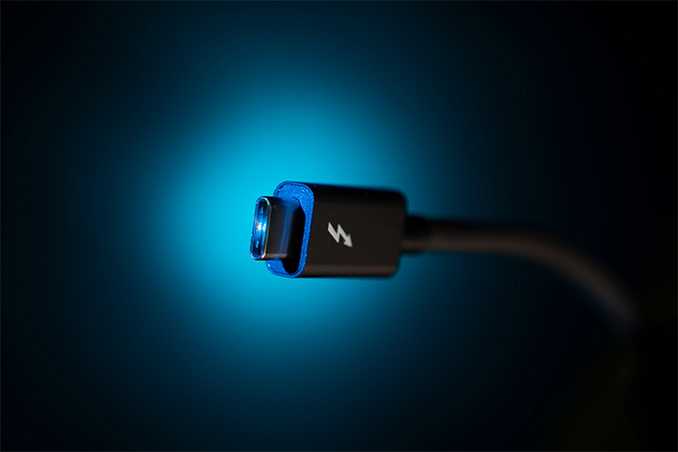

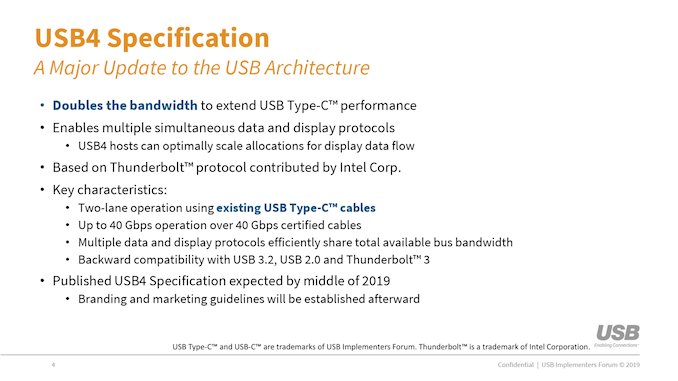

 Quote
Quote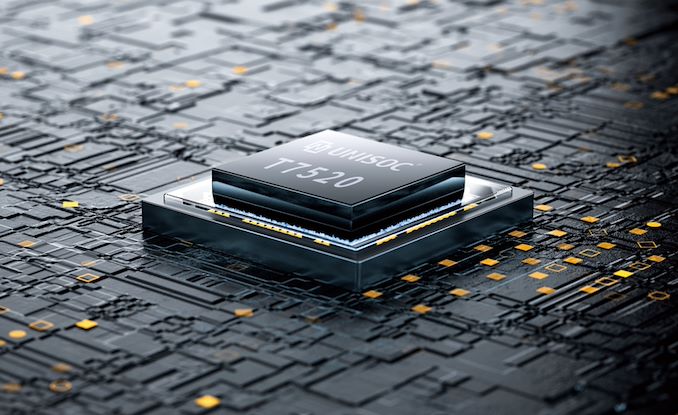
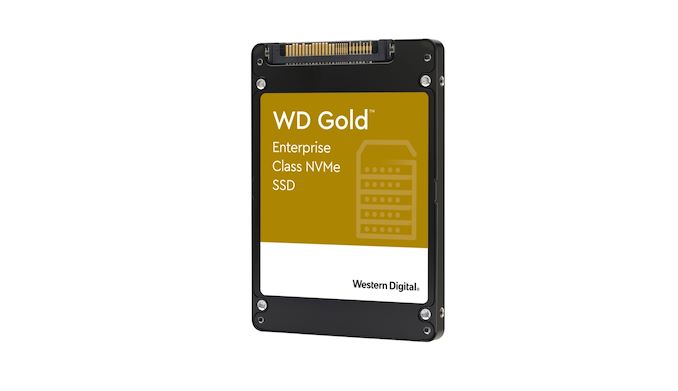
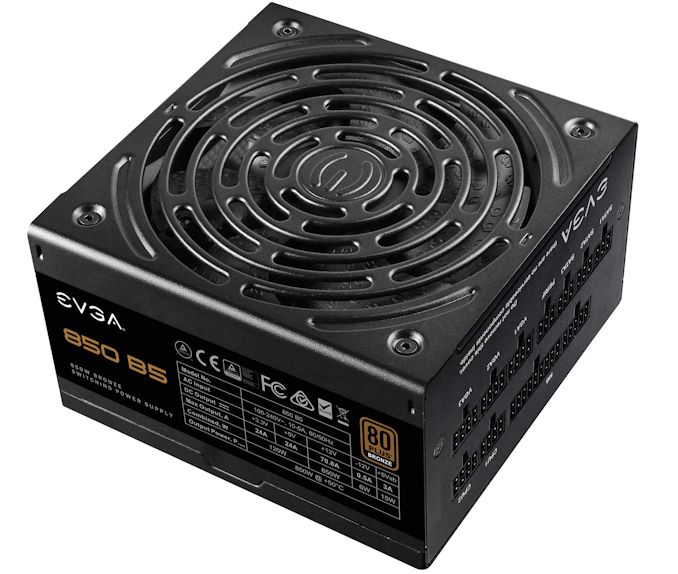

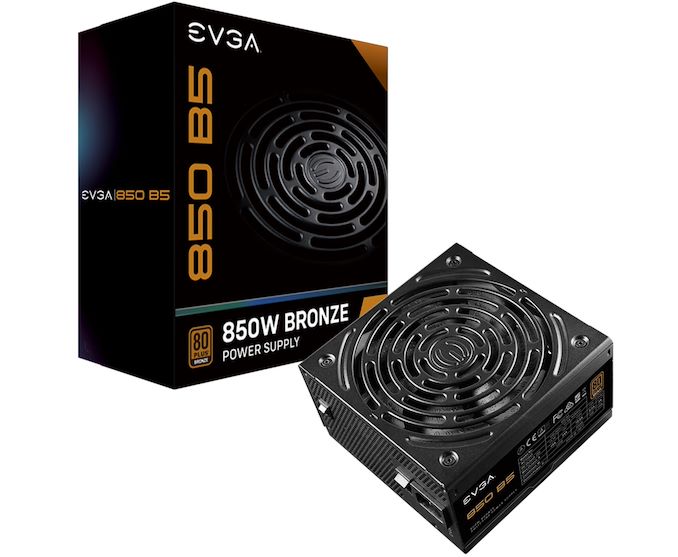

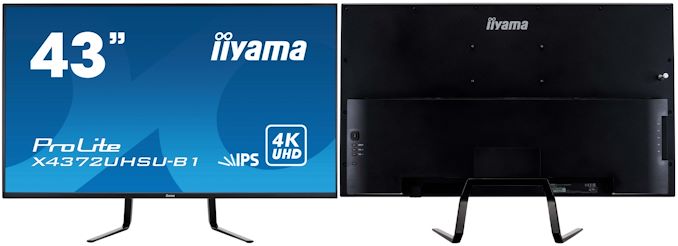

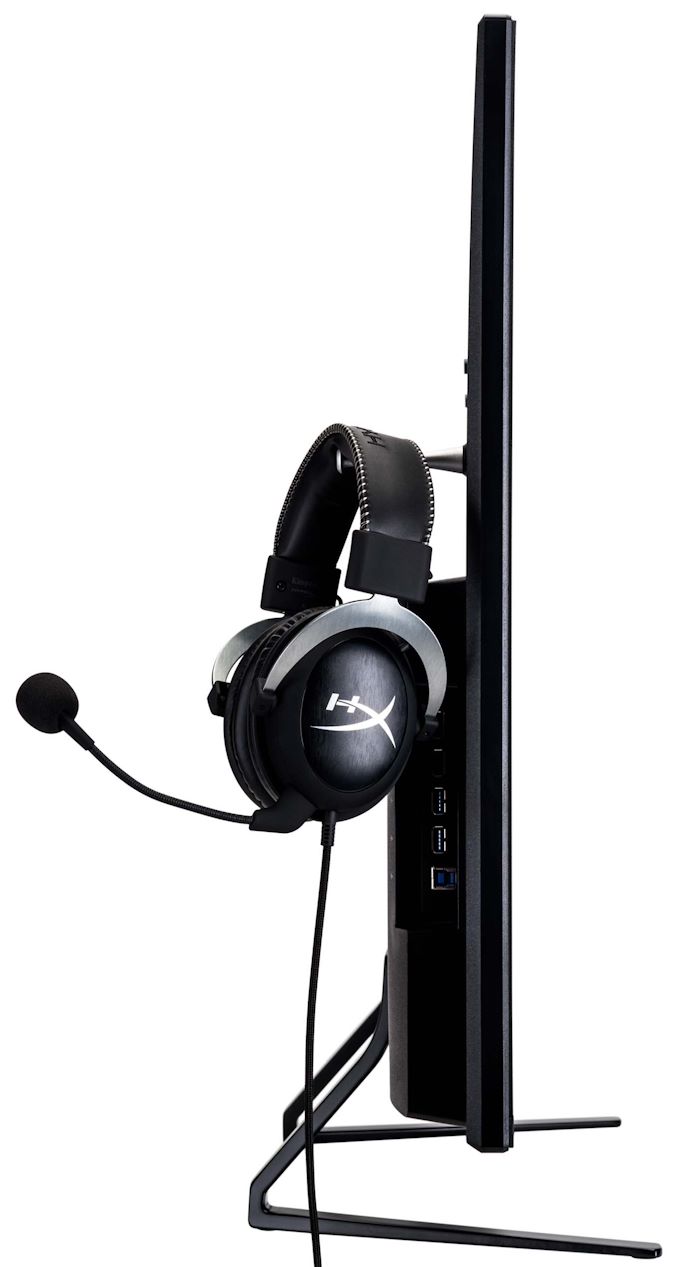



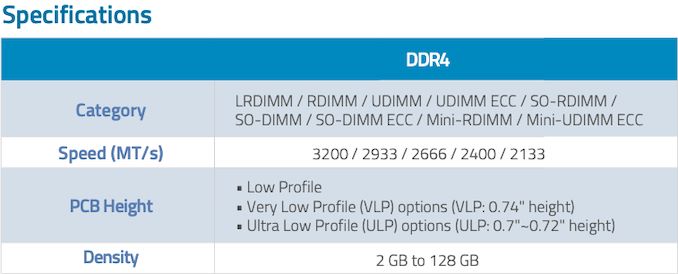
















Bookmarks